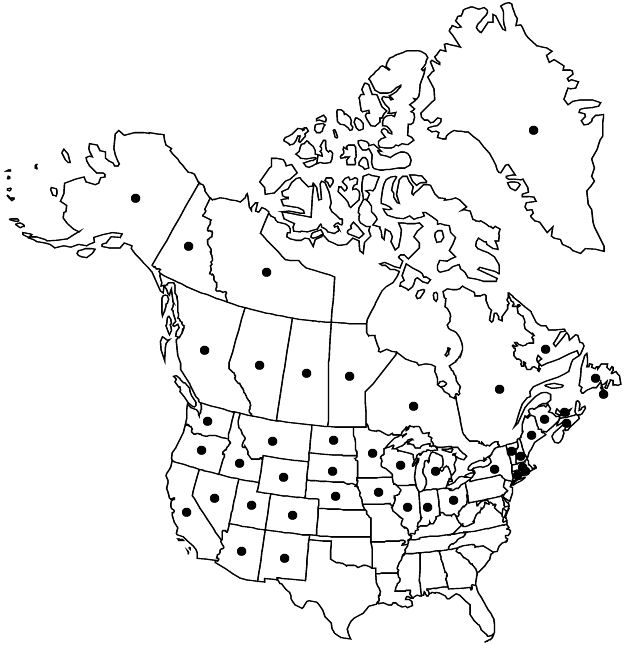Potentilla anserina subsp. anserina
Stems densely hairy. Leaves horizontal to erect, 3–20 cm, rarely longer; leaflets (5–)6–11(–12) per side, overlapping, rarely separate, teeth (4–)5–8(–11+) per side, teeth apex acute to acuminate, surfaces: abaxial with long hairs common to abundant, on and between veins, cottony-crisped hairs dense, adaxial glabrous or sparsely to densely hairy. Flowers 1–1.5(–2) cm diam.; epicalyx bractlets narrowly to broadly ovate-triangular, equal to sepals, often 2-fid or dentate; hypanthium patelliform (much wider than deep) in fruit; petals overlapping or not, elliptic to broadly elliptic; carpels (10–)20–60. Achenes with dorsal groove. 2n = 28, 35, 42.
Phenology: Flowering spring–fall.
Habitat: Dry meadows, pastures, open dry pine and aspen forests, dry sandy and gravelly stream-, lake-, and seashores, sand dunes, inland alkaline habitats, dry ruderal habitats
Elevation: 0–3000 m
Distribution

Greenland, St. Pierre and Miquelon, Alta., B.C., Man., N.B., Nfld. and Labr., N.W.T., N.S., Ont., P.E.I., Que., Sask., Yukon, Alaska, Ariz., Calif., Colo., Conn., Idaho, Ill., Ind., Iowa, Maine, Mass., Mich., Minn., Mont., Nebr., Nev., N.H., N.Mex., N.Y., N.Dak., Ohio, Oreg., R.I., S.Dak., Utah, Vt., Wash., Wis., Wyo., Mexico, South America (Chile), Eurasia, Australia.
Discussion
Subspecies anserina is the most widespread subspecies, occurring both on seashores and well inland. It is presumed introduced in Greenland and Alaska.
A. Rousi (1965) compared American and European plants of subsp. anserina and found no consistent morphologic differences between the continents. An ecologic difference does exist: whereas the European plants are common both in coastal and inland habitats, the American plants are mainly inland. Both native and introduced plants are probably present in North America, as the European plant is a widely established, aggressive weed. Plants with a dense sericeous vestiture on both leaf surfaces (var. sericea) are especially characteristic of inland saline habitats.
Selected References
None.